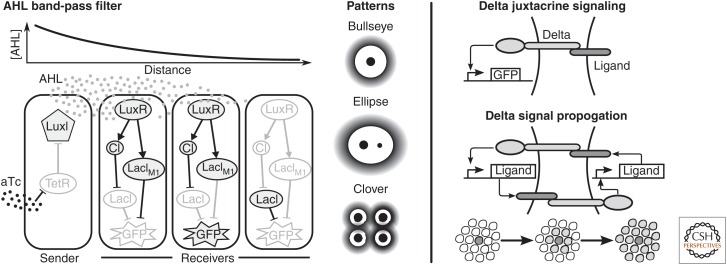Figure 2.
Engineered intercellular communication can coordinate spatial changes in gene expression. Communication channels are frequently based on diffusible signals such as acyl-homoserine lactone (AHL) (left) (Basu et al. 2005). The receiver gene network responds to intermediate concentrations of AHL, mimicking the “French flag” model of morphogen patterning (Wolpert 1969). Arranging senders in various starting configurations produces patterns similar to those found in natural development. Communication can also be based on juxtacrine signaling (right), in which a cell presenting a ligand on its surface activates signal transduction in adjacent cells (Sprinzak et al. 2010). A feedback loop between signal activation and ligand production leads to signal propagation (Matsuda et al. 2012). GFP, Green fluorescent protein.

